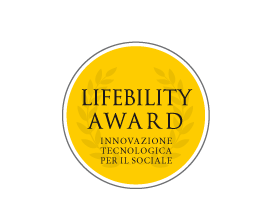LB8F_035_BretMaps
Per partecipare al concorso i progetti vanno inviati entro:
Progetto proposto da Gaia Guadagnoli
Building Resilience Empowering Technologies & Maps
In Italia l’88,3% dei Comuni sono a rischio disastro naturale. La macchina della protezione civile presenta alcuni gap rilevanti, tra cui la mancanza di un sistema di allerta strutturato e di un meccanismo sistematico di raccolta delle richieste di intervento. E’ necessario uno strumento per comunicare efficacemente nei momenti di pericolo od emergenza, al fine di minimizzare i danni a cose e persone. BRETmaps è una piattaforma di gestione delle emergenze che permette di efficientare le comunicazioni tra cittadini e istituzioni, permettendo loro di diramare allerte e allarmi tramite notifiche, mentre i cittadini riusciranno a inviare richieste di aiuto più mirate ed efficaci. Inoltre, durante un’emergenza, saranno disponibili mappe satellitari aggiornate. Complessivamente il sistema aumenterà la resilienza dei cittadini e del territorio, riducendo i danni causati dalle catastrofi naturali, affermandosi sia sul mercato assicurativo che in quello della pubblica amministrazione.
What is important to understand about emergencies, is we cannot avoid the disaster to come, but still we can work on prevention and awareness in order to reduce the damages. Europe is not safe from weather related disasters, as every year it is striked by more than 50 floods. Italy is particularly exposed country: 88,3% of italian Municipalities are reported to be at risk of disasters (ISPRA Report, 2016). The main issues are related to an institutions inability to supervise their territory; a technological backwardness of the systems used in prevention and emergency management; a lack of knowledge in the population about the emergency best practices; difficult and ineffective communication between the citizens and the institutions during emergencies. The solution is a mobile platform through which it will be possible to report potential hazards with pictures and texts and receive guidelines, improving communication between the community and the stakeholders. Also, in case of an ongoing emergency, the users will be provided with nearly live updated satellite maps of the affected area, helpful both for the citizens and for the rescue teams. It will be possible then to find the most affected areas and make rescuing actions more efficient and effective, helping saving human lives and saving resources.

